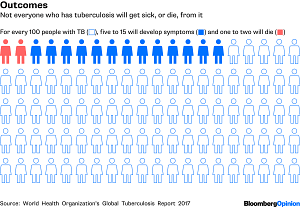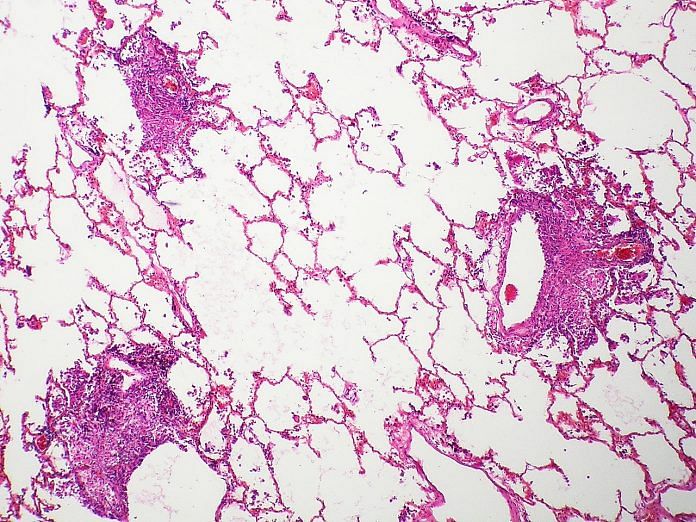From 2000 to 2015, TB claimed 33 million lives and cost the world economy an estimated $616 billion. By 2030, a further $1 trillion and 28 million lives may be lost.
Tuberculosis, a disease fueled by poverty, overcrowding and undernutrition, is a global barometer of deprivation. Of the more than 4,000 men, women and children TB kills every day, most are poor.
TB’s connection to poverty is explained, in large part, by the way Mycobacterium tuberculosis operates: It causes disease in only a fraction of the people it infects. Almost a quarter of the world’s population harbors the tuberculosis bacterium, but in most cases, it is walled off by the immune system.
The bug activates in 5-15 percent of carriers, who tend to have other health problems. They may be undernourished, infected by HIV, have a habit of smoking or drinking too much, or live with extreme air pollution. They may suffer from diabetes or other chronic illness, or take immunosuppressant medications. A loss of sun-supported vitamin D can be a trigger in people who migrate from equatorial areas to places where there is winter. In many cases, scientists can’t tell exactly what has roused the pathogen.

Active TB can weaken the brain, kidneys or spine, but it mainly attacks the lungs, causing coughing, fever and chills. Sufferers enable the bacteria’s spread by expelling germ-containing droplets into the air via coughs and sneezes, or even by just talking. The germs can remain airborne for hours, and be inhaled by unwitting new hosts. One person ill with TB can infect as many as 10 other people over the course of a year.
TB can be cured with a six-month regimen of four so-called first-line medicines: isoniazid, rifampicin, ethambutol and pyrazinamide. The cocktail helps kill bacteria that are resistant to any one of the drugs. The use of poor-quality medicines and non-adherence to treatment guidelines encourage drug resistance. Multidrug-resistant TB requires more powerful, second-line medications. When these aren’t given long enough, the bacteria can become resistant to all medicines. In India, a string of such treatment failures led to the emergence of what doctors described in 2012 as totally drug-resistant TB. Extensively drug-resistant TB, a somewhat less hopeless category, afflicts 8,000 patients worldwide, mainly in India, Ukraine, South Africa and Belarus.
Because healthy people are relatively safe from tuberculosis, improved living standards during the early 20th century helped lower the incidence. It fell even faster in the 1950s and ’60s, when anti-TB drugs became available. But in recent decades, the emergence of HIV and mutant antibiotic-resistant bacteria have hampered control efforts, slowing the pace of decline in global TB incidence.
From 2000 to 2015, TB claimed 33 million lives and cost the world economy an estimated $616 billion, with India, Indonesia, China and Russia carrying half that burden, according to a recent KPMG report. Unless governments, civil society organizations and individual citizens take more effective action, by 2030, a further $1 trillion and 28 million lives may be lost.



